Learning from the Best: World Famous Pottery Artists
Pottery is more than just a craft; it is a form of expression that has been practiced for thousands of years. From ancient civilizations to modern-day artists, the world of pottery is rich with stories, techniques, and innovations. In this article, we will explore the lives and works of some of the most renowned pottery artists who have left an indelible mark on the craft. Each artist brings their own unique flair, philosophy, and creativity to the table, inspiring both budding potters and seasoned professionals alike.
Imagine walking through a gallery filled with stunning ceramic pieces, each telling its own story. The colors, the textures, and the forms all come together to create a visual feast. This is the magic of pottery, where the clay transforms into art through the hands of a skilled artisan. Artists like Bernard Leach, Lucie Rie, Shoji Hamada, and Grayson Perry have not only mastered their craft but have also challenged conventional norms, pushing the boundaries of what pottery can be.
As we delve deeper into their lives and techniques, you will discover how their individual styles contribute to the broader narrative of pottery. Whether it's Leach's fusion of Eastern and Western traditions or Rie's minimalist elegance, each artist offers a unique perspective that enriches the world of ceramics. So, grab a cup of tea, sit back, and let’s embark on this journey through the world of pottery, where every piece has a story and every artist has a vision.
- Who is considered the father of British studio pottery?
Bernard Leach is often referred to as the father of British studio pottery due to his innovative techniques and blending of Eastern and Western styles. - What makes Lucie Rie's pottery unique?
Lucie Rie is celebrated for her elegant, minimalist designs and her revolutionary glazing techniques that incorporate unexpected colors and textures. - What is the Mingei movement?
The Mingei movement, championed by Shoji Hamada, emphasizes the beauty of everyday objects and promotes the idea that art should be accessible to all. - How does Grayson Perry address social issues in his work?
Grayson Perry often uses humor and satire in his pottery to explore complex themes of identity and culture, challenging societal norms through his art.
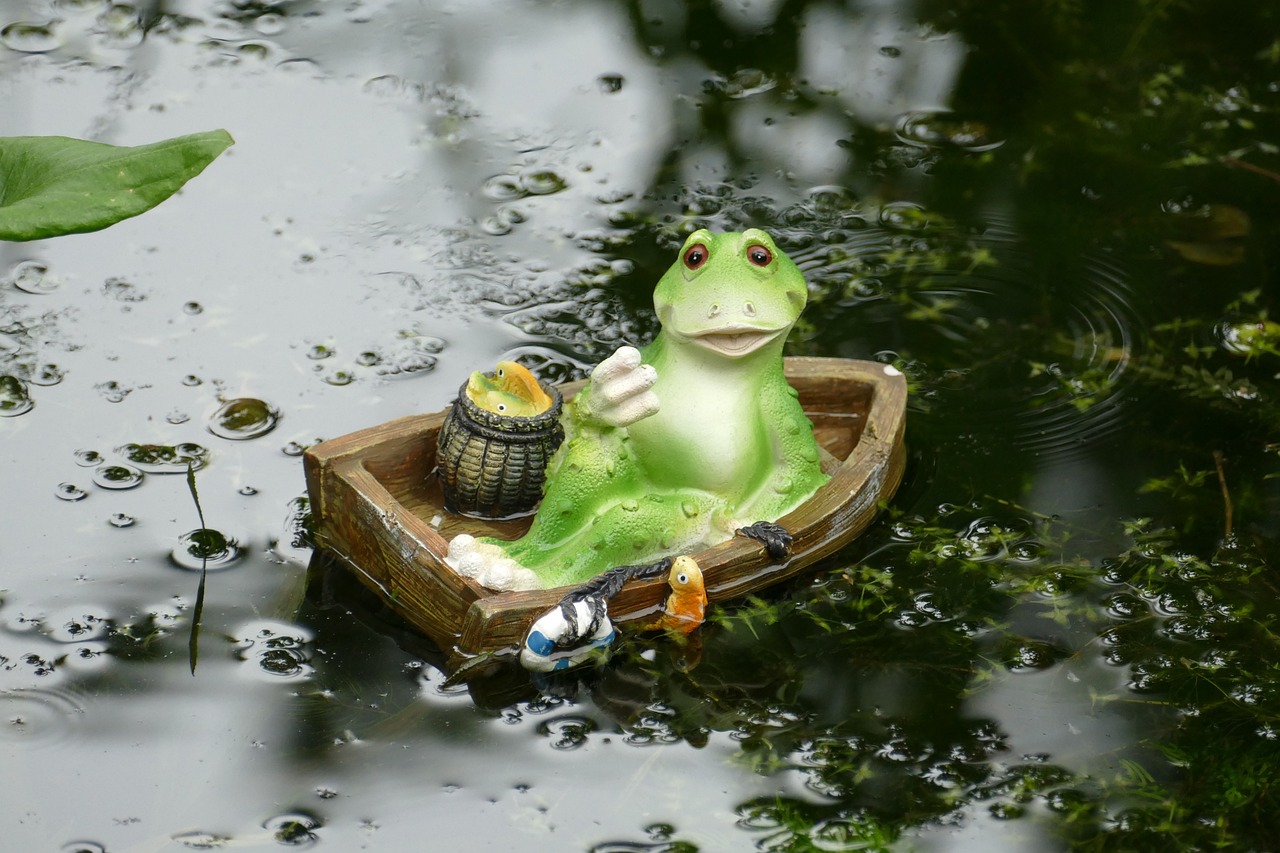
The Legacy of Bernard Leach
This article explores the lives and techniques of renowned pottery artists, highlighting their unique styles and contributions to the craft. Discover how their work inspires both aspiring and seasoned potters alike.
Bernard Leach is often called the father of British studio pottery. Born in 1887 in Tokyo, Japan, he moved to England in 1900, where he began to develop his unique artistic vision. Leach's innovative techniques and philosophies transformed the craft, blending Eastern and Western styles to create timeless pieces that continue to influence artists today. He believed in the importance of craftsmanship, advocating for the idea that pottery should not only be functional but also a work of art. Through his pioneering efforts, he established a new standard for pottery that emphasized both beauty and utility.
One of the most significant aspects of Leach's legacy is his role in fostering a community of potters. He co-founded the Leach Pottery in St. Ives, Cornwall, which became a hub for ceramic artists. This establishment not only served as a studio but also as a teaching center, where aspiring potters could learn the craft under his guidance. Leach's teachings emphasized the importance of understanding materials and techniques, encouraging potters to explore their creativity while respecting traditional methods.
Leach's approach to pottery was deeply influenced by his experiences in Japan, where he studied under the renowned potter Shoji Hamada. This connection to Japanese pottery is evident in his work, which often features natural glazes and organic forms. His pieces are characterized by a sense of harmony and balance, reflecting the beauty of nature. For instance, Leach often utilized local clay and experimented with different firing techniques, resulting in unique textures and colors that tell a story of their origin.
In addition to his technical contributions, Leach's philosophy on art and pottery has left a lasting impact. He believed that every piece of pottery should convey a sense of the maker's spirit and intention. This idea resonates with many contemporary artists who strive to create meaningful connections between their work and the viewer. Leach's emphasis on the emotional and spiritual aspects of pottery has encouraged generations of potters to infuse their creations with personal narratives and cultural significance.
Leach's legacy is not just confined to his own work; it has inspired a global movement of potters who seek to blend traditional techniques with modern aesthetics. His influence can be seen in the works of many contemporary artists who draw from both Eastern and Western traditions, creating a rich tapestry of styles and approaches. In recognition of his contributions, Leach was awarded numerous accolades throughout his life, and his work continues to be celebrated in exhibitions and museums around the world.
In summary, Bernard Leach's legacy is a testament to the power of pottery as an art form that transcends cultural boundaries. His innovative techniques, commitment to craftsmanship, and philosophical insights have shaped the landscape of modern ceramics, inspiring both aspiring and seasoned potters alike. As we explore the world of pottery, let us remember the profound impact of Leach's work and the way it continues to resonate with artists today.
- What is Bernard Leach known for?
Bernard Leach is known for being the father of British studio pottery and for blending Eastern and Western pottery styles.
- What was the Leach Pottery?
The Leach Pottery, co-founded by Bernard Leach in St. Ives, Cornwall, served as both a studio and a teaching center for aspiring potters.
- How did Leach influence modern pottery?
Leach's techniques and philosophies have inspired countless potters to explore the emotional and spiritual aspects of their work, creating a dialogue between tradition and modernity.
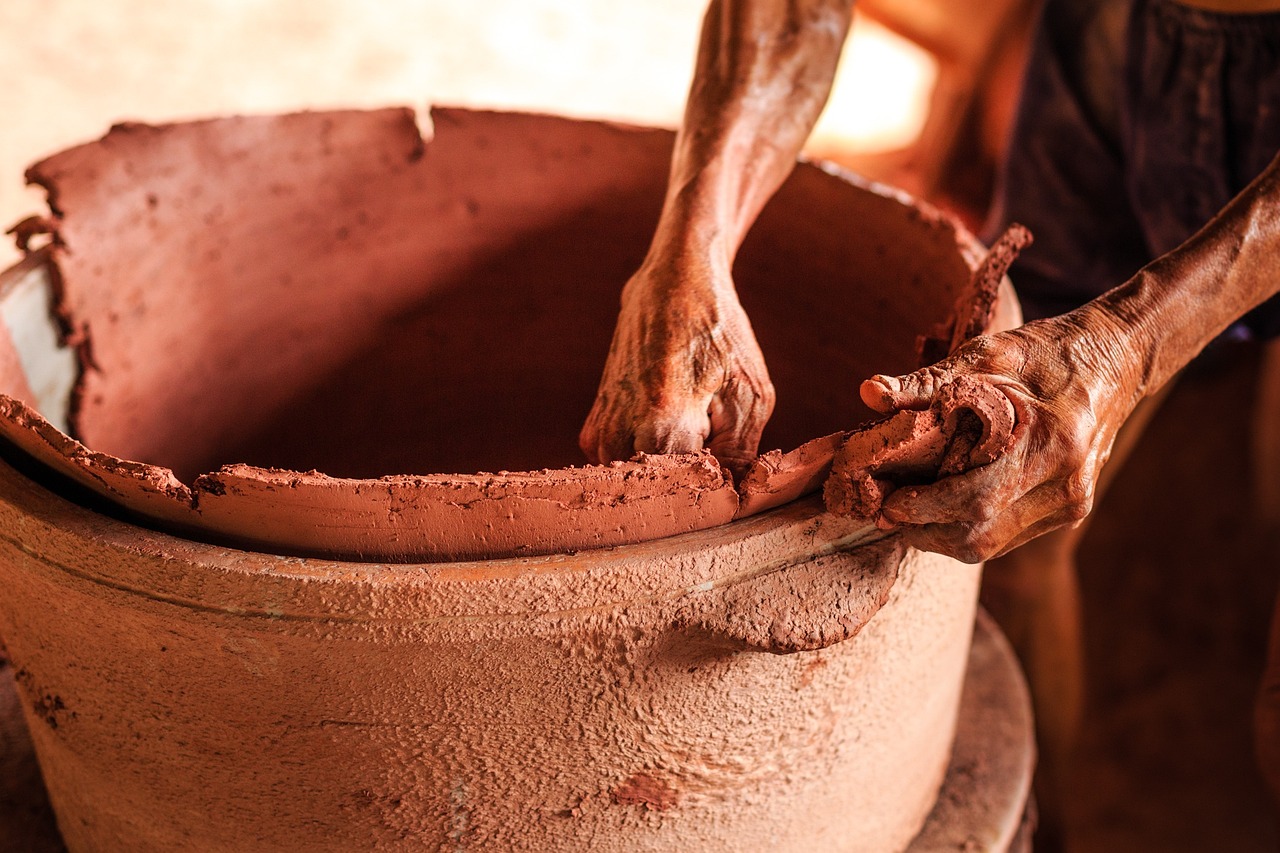
The Artistry of Lucie Rie
Lucie Rie, a name that resonates with elegance and innovation in the world of pottery, has become a beacon for both aspiring and seasoned ceramists. Born in Austria in 1902, Rie moved to England in 1938, where she would go on to revolutionize the pottery scene with her unique approach. Her work is characterized by a stunning blend of minimalism and functional beauty, making each piece not just an object, but a work of art that tells a story.
One of the most striking aspects of Rie's artistry is her glazing techniques. She was not afraid to experiment, often combining unexpected colors and textures to create pieces that were both visually captivating and tactile. For instance, her use of rich, earthy tones alongside vibrant hues created a stunning contrast that drew the eye and invited touch. This innovative spirit not only defined her work but also inspired a generation of potters to explore their own creative boundaries.
Rie's influence on modern ceramics cannot be overstated. Her commitment to craftsmanship and her belief in the emotional connection between the artist and their work encouraged many to embrace their individuality. In a world where mass production often overshadows artistry, Rie reminded us of the beauty found in the handmade. Her pieces, such as the iconic porcelain bowls and vases, serve as a testament to her skill and vision, each telling a story of its own.
Rie's approach to glazing was nothing short of revolutionary. By pushing the boundaries of traditional glazing methods, she introduced techniques that included layering different glazes to achieve depth and complexity. This experimentation resulted in pieces that were not only functional but also strikingly beautiful. For example, her famous ‘Crackle Glaze’ technique created a textured surface that added a new dimension to her work.
Her willingness to challenge the norms of pottery opened doors for others in the field. Many potters today look to Rie’s work as a source of inspiration, encouraging them to explore new materials and techniques. The legacy of her innovative glazing continues to influence contemporary ceramic artists, reminding them that creativity knows no bounds.
Lucie Rie's impact on modern ceramics extends far beyond her own creations. She played a pivotal role in shaping contemporary ceramic practices, encouraging artists to embrace their unique styles and push the limits of their craft. Her emphasis on individuality has led to a rich diversity in pottery today, with artists exploring a myriad of forms, colors, and techniques.
Rie's influence is evident in the works of many contemporary potters who strive to capture the same spirit of innovation and emotional connection in their pieces. By fostering a sense of community among artists, she helped elevate pottery from a mere craft to a respected art form, inspiring future generations to explore the depths of their creativity.
Throughout her illustrious career, Rie collaborated with numerous artists, enriching her own work and expanding her artistic vision. These partnerships not only influenced her style but also played a crucial role in elevating the status of pottery in the art world. For example, her collaboration with fellow potter Hans Coper resulted in pieces that showcased the harmony between their distinct styles, blending functionality with artistic expression.
Such collaborations highlighted the importance of community and shared knowledge in the arts. Rie believed that working alongside other artists could lead to unexpected results, often sparking new ideas and techniques that would further enhance her own work. This philosophy of collaboration remains relevant today, encouraging artists to learn from one another and grow together.
Lucie Rie's philosophy centered around the idea that pottery is not just about creating functional objects; it is about forging an emotional connection with the viewer. She believed that each piece should resonate with its audience, evoking feelings and memories that transcend the physical form. This approach encourages a deeper appreciation for the art of pottery, reminding us that every creation has a story to tell.
In a world often dominated by mass production, Rie’s emphasis on craftsmanship and individuality serves as a powerful reminder of the value of handmade art. Her legacy continues to inspire artists to approach their work with passion and intention, fostering a deeper connection between the creator and the creation.
- What materials did Lucie Rie primarily use in her pottery? Rie primarily used porcelain, which allowed her to create delicate and refined pieces.
- How did Lucie Rie's background influence her work? Her European roots and exposure to both Eastern and Western art forms heavily influenced her unique style and techniques.
- What is the significance of Rie's glazing techniques? Her innovative glazing techniques revolutionized pottery, encouraging artists to experiment with color and texture.
- What can modern potters learn from Lucie Rie's philosophy? Modern potters can learn the importance of individuality, craftsmanship, and the emotional connection between the artist and their work.

Rie's Innovative Glazing Techniques
When it comes to pottery, the glaze can make or break a piece, and Lucie Rie understood this better than most. Her innovative glazing techniques were not just about aesthetics; they were a form of self-expression, a way to breathe life into her creations. Rie's approach was characterized by a fearless exploration of color and texture, often incorporating unexpected elements that would surprise and delight the viewer. Imagine walking into a gallery and being drawn to a piece that seems to change as you move around it—this was the magic of Rie's work.
One of her signature techniques involved layering glazes, creating a depth that was almost painterly. She often combined matte and glossy finishes, which added a striking contrast to her forms. This technique not only enhanced the visual appeal but also invited touch, encouraging a deeper connection between the viewer and the artwork. Rie’s glazes were often inspired by the natural world, reflecting her love for the landscape around her. Colors reminiscent of the sky at dusk or the rich earth after rain became a hallmark of her style.
Furthermore, Rie was not afraid to experiment with unconventional materials. She would often incorporate elements like ash or minerals into her glazes, resulting in unique textures and finishes that were entirely her own. This willingness to push boundaries is what set her apart from her contemporaries. In fact, her innovative spirit can be summarized in a few key aspects:
- Layering Techniques: Rie’s use of multiple glaze layers created depth and complexity.
- Natural Inspirations: Her color palette often drew from the beauty of nature, evoking feelings of tranquility and harmony.
- Unconventional Materials: Incorporating unexpected elements into her glazes led to unique textures and finishes.
Rie's experimentation with glazes didn't just result in beautiful pieces; it also inspired a generation of potters to explore their own creative boundaries. Many artists today credit her as a significant influence in their own work, encouraging them to take risks and embrace the unexpected. Her legacy lives on, not just in her stunning pieces but in the spirit of innovation she instilled in the pottery community.
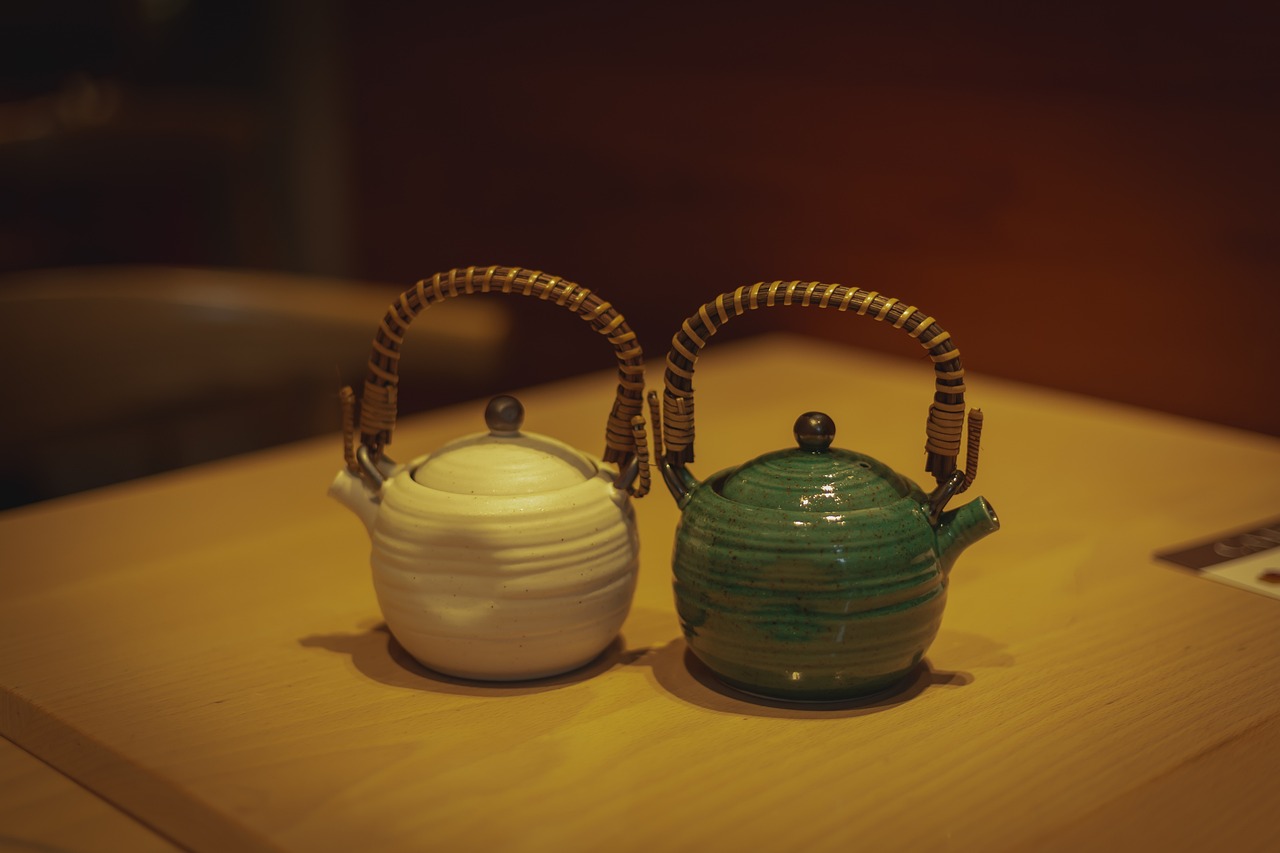
Impact on Modern Ceramics
Lucie Rie's influence on modern ceramics is nothing short of revolutionary. Her work has not only redefined aesthetic standards but also reshaped the way artists approach the craft. By emphasizing individuality and personal expression, Rie encouraged a generation of potters to break free from traditional constraints and explore their unique styles. This shift in mindset has led to a flourishing of creativity within the pottery community, where artists now feel empowered to experiment with form, color, and texture.
One of the most significant aspects of Rie's impact is her innovative glazing techniques. She often employed unexpected colors and textures, which challenged the preconceived notions of what pottery could be. This willingness to experiment inspired many potters to push their own boundaries, resulting in a diverse array of contemporary ceramic works that reflect a wide range of influences and styles. As a result, Rie's legacy can be seen in the work of countless artists who have adopted her adventurous spirit.
Moreover, Rie's approach to pottery has encouraged a deeper appreciation for craftsmanship and the emotional connection between the artist and their work. This philosophy resonates with both aspiring and seasoned potters, prompting them to invest more time in honing their skills and understanding the materials they use. The emphasis on craftsmanship has led to a resurgence in the value placed on handmade pottery, as consumers increasingly seek out unique, artisanal pieces that tell a story.
Rie's impact is also evident in the way modern ceramics are showcased and celebrated. Galleries and exhibitions now frequently highlight the work of contemporary potters, allowing them to gain recognition and appreciation for their artistry. This shift has helped elevate pottery from a functional craft to a respected art form, bridging the gap between traditional techniques and modern artistic expression.
| Key Aspects of Rie's Impact | Description |
|---|---|
| Innovative Glazing Techniques | Rie's use of unexpected colors and textures has inspired potters to experiment and redefine their work. |
| Emphasis on Individuality | Encouraged artists to express their unique styles, leading to a diverse range of ceramic works. |
| Craftsmanship Appreciation | Promoted a deeper connection between artist and work, valuing handmade pottery. |
| Artistic Recognition | Helped elevate pottery to a respected art form, showcased in galleries and exhibitions. |
In summary, Lucie Rie's contributions to modern ceramics are profound and far-reaching. Through her innovative techniques and emphasis on individuality, she has inspired countless artists to embrace their creativity and explore new possibilities in their work. Her legacy continues to shape the pottery landscape, ensuring that the art form remains vibrant and relevant in contemporary society.
- Who was Lucie Rie? Lucie Rie was a renowned potter known for her minimalist style and innovative glazing techniques.
- What is the significance of Rie's glazing techniques? Rie's glazing techniques challenged traditional pottery aesthetics, encouraging experimentation and individuality among artists.
- How did Rie influence modern pottery? Rie's emphasis on craftsmanship and personal expression has inspired many potters to explore their unique styles and techniques.
- What is the legacy of Lucie Rie? Rie's legacy is one of innovation and inspiration, shaping the practices of contemporary potters and elevating the status of ceramics as an art form.
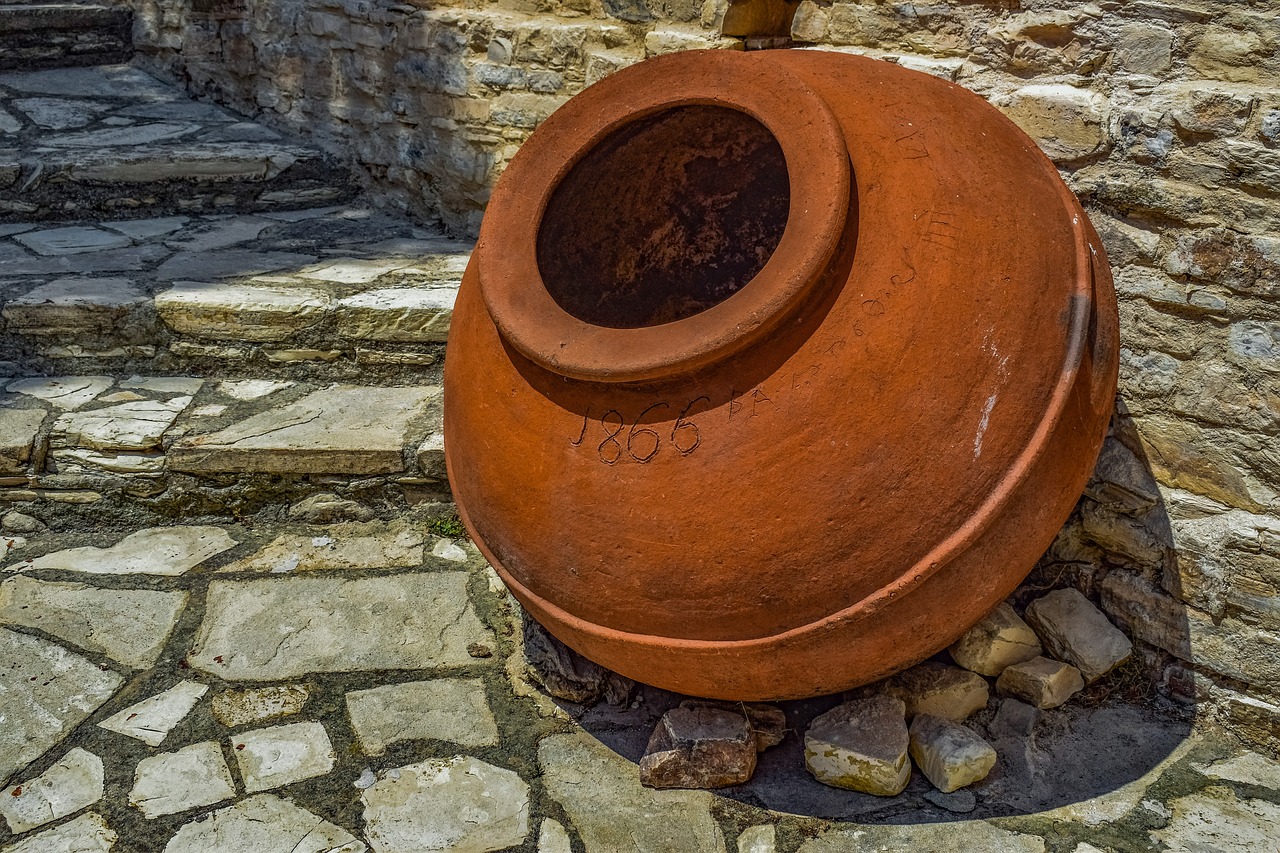
Collaborations and Influences
Throughout her illustrious career, Lucie Rie engaged in a variety of collaborations that not only enriched her own artistic vision but also elevated the craft of pottery itself. These partnerships were not merely transactional; they were deeply rooted in a shared passion for experimentation and innovation. Rie's collaborations with other artists, such as Hans Coper, were particularly significant. Together, they pushed the boundaries of traditional pottery, merging distinct styles and techniques to create pieces that were both functional and artful.
Rie's work often reflected the influence of her contemporaries and the broader art movements of her time. For instance, her exposure to the Vienna Secession movement and the Bauhaus principles shaped her minimalist approach, emphasizing form and function. This blend of influences allowed her to create pottery that was not only visually stunning but also resonated with the philosophies of modern art. Rie's ability to draw inspiration from various sources is a testament to her understanding of the interconnectedness of art forms.
Moreover, Rie's relationships with other artists fostered a vibrant exchange of ideas. For example, her collaboration with British sculptor and ceramicist Richard Batterham led to the exploration of new textures and glazing techniques. This synergy resulted in a collection of pieces that showcased the harmony between their distinct artistic voices. Rie's willingness to collaborate demonstrates her belief that art thrives in a community, where ideas can be shared and transformed into something greater than the sum of their parts.
In addition to her collaborations, Rie was influenced by a range of cultural and artistic movements. The Japanese pottery tradition, with its emphasis on craftsmanship and natural materials, played a significant role in shaping her aesthetic. She often incorporated traditional Japanese techniques, such as raku firing, into her work, blending them with her unique style to create pieces that were both innovative and respectful of historical practices. This fusion of influences not only enriched her own work but also inspired a new generation of potters to explore the intersection of different cultural traditions.
Ultimately, Lucie Rie's collaborations and influences reflect her profound understanding of the art world and her commitment to pushing the boundaries of pottery. By embracing the ideas and techniques of others, she created a legacy that continues to inspire artists today. Her work serves as a reminder that collaboration is not just about creating art together; it’s about building a community that fosters creativity and innovation.
- What is Lucie Rie's most famous work?
One of Rie's most celebrated pieces is her iconic bowls, known for their elegant shapes and innovative glazing techniques.
- How did Rie's collaborations influence her work?
Collaborations allowed Rie to experiment with new techniques and ideas, enriching her artistic practice and expanding her creative horizons.
- What techniques did Lucie Rie innovate?
Rie is known for her unique glazing techniques, which often incorporated unexpected colors and textures, setting her apart in the pottery world.
- Why is Lucie Rie considered a pivotal figure in pottery?
Her minimalist style, innovative techniques, and collaborative spirit have left a lasting impact on contemporary ceramics, inspiring countless artists.
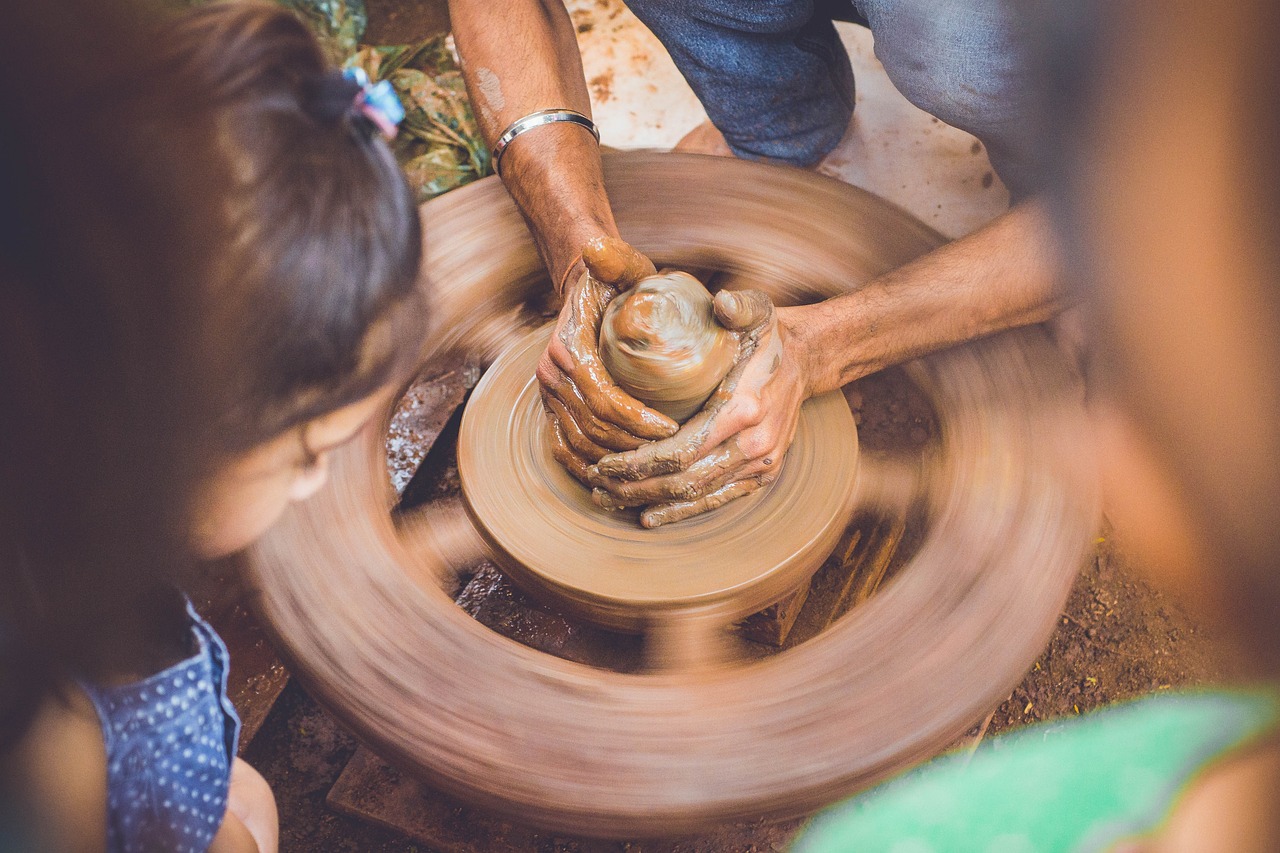
Rie's Philosophy on Pottery
Lucie Rie believed that pottery was not just about creating functional objects; it was a profound expression of the artist's soul. Her philosophy revolved around the idea that each piece should resonate with the viewer, inviting them to engage with it on a personal level. Rie emphasized the importance of craftsmanship, insisting that every detail mattered. She often said, "The pot must be made with love," highlighting the emotional connection that should exist between the artist and their work.
Rie's approach to pottery was deeply rooted in her experiences and her understanding of the materials she used. She felt that a potter should develop a relationship with their materials, allowing the natural properties of clay and glaze to guide the creation process. This philosophy encouraged potters to embrace imperfections, as they often tell a story of the making process. For Rie, it was essential that each piece reflected the artist's journey, complete with its highs and lows.
In her studio, Rie fostered an atmosphere of experimentation and innovation. She believed that breaking boundaries was crucial for growth as an artist. This meant not only pushing the limits of traditional techniques but also exploring new forms and glazing methods. Rie's willingness to take risks has inspired countless potters to step outside their comfort zones and discover their unique voices.
Moreover, Rie's philosophy extended into the realm of community and collaboration. She often collaborated with other artists, believing that sharing ideas and techniques enriched the art form. These partnerships were not just about creating beautiful objects; they were about building a supportive community where artists could learn from one another and grow together. Rie understood that pottery, at its core, is a communal practice, deeply connected to the culture and environment from which it emerges.
Ultimately, Rie's philosophy on pottery invites us to reflect on our own connections to the objects we create and use. It challenges us to consider the emotional depth behind each piece and the stories they tell. In a world increasingly dominated by mass production, Rie's work serves as a reminder of the value of handcrafted artistry and the personal touch that makes each piece unique.
- What is Lucie Rie's most famous work? One of her most celebrated pieces is the "Bowl with Blue and Green Glaze," which exemplifies her unique glazing techniques.
- How did Rie's philosophy influence modern pottery? Rie's emphasis on individuality and emotional connection has encouraged many contemporary potters to explore their own artistic identities.
- What materials did Lucie Rie prefer to work with? Rie often used stoneware and porcelain, experimenting with various glazes to achieve her signature looks.
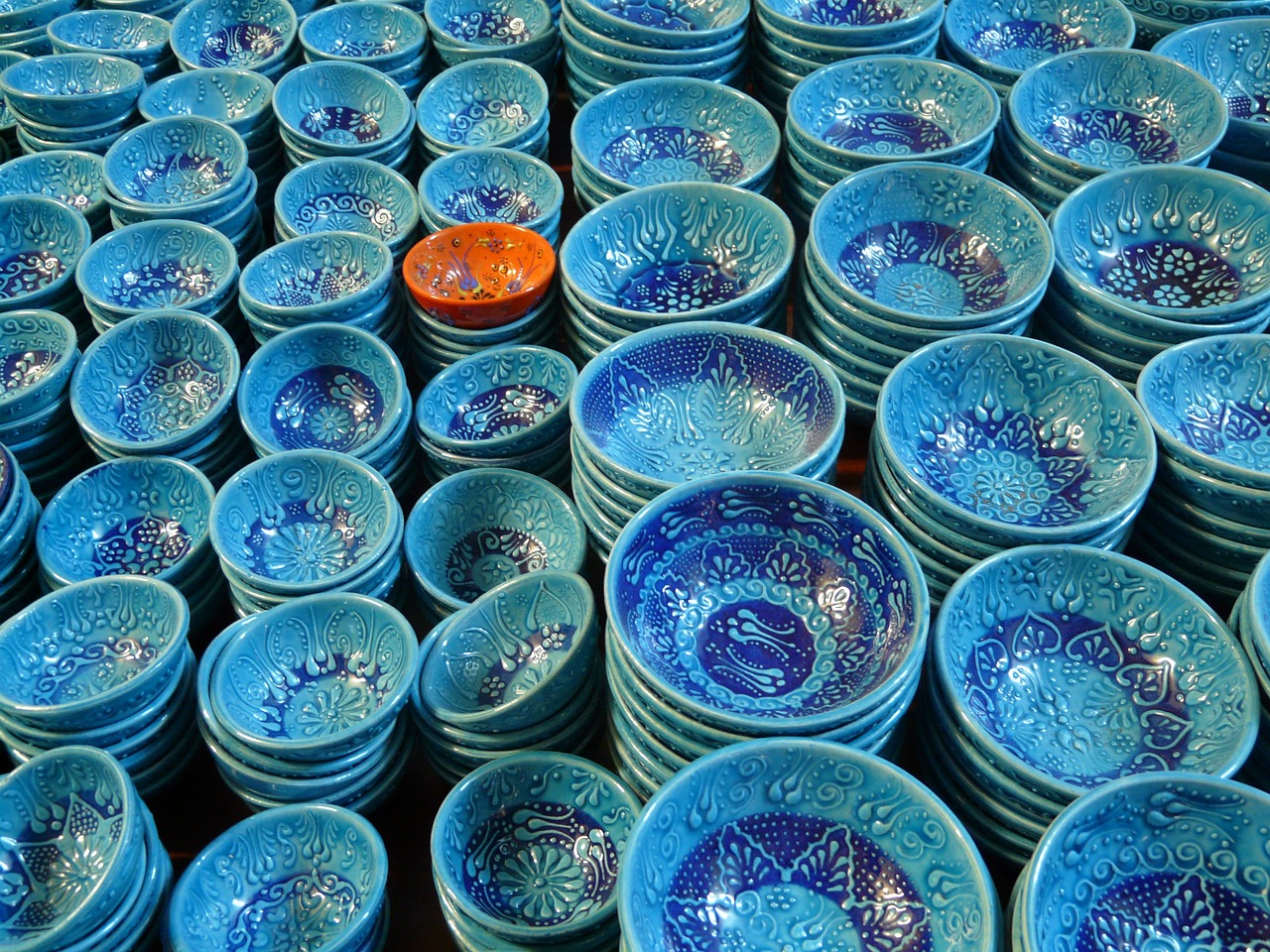
The Mastery of Shoji Hamada
Shoji Hamada was not just a potter; he was a visionary who breathed life into clay, shaping it into functional art that resonated with the essence of Japanese culture. Born in 1894, Hamada's journey into the world of pottery began under the guidance of traditional craftsmen, but he quickly transcended conventional boundaries. His work is characterized by a deep respect for nature and a commitment to using traditional techniques, which he combined with a modern sensibility. This unique blend not only defined his style but also paved the way for a global appreciation of Japanese pottery.
One of the remarkable aspects of Hamada's artistry is his ability to create pieces that are both beautiful and practical. His ceramics often feature earthy tones and textured surfaces that evoke the natural world, making them a perfect addition to any home. Each piece tells a story, reflecting the meticulous process of creation and the philosophy that underpins his work. Hamada believed that pottery should serve a purpose, and this belief is evident in his functional wares, which include plates, bowls, and teapots.
Hamada's influence on the world of pottery extends far beyond his own creations. He played a pivotal role in the Mingei movement, which celebrated the beauty of everyday objects crafted by hand. This movement sought to elevate folk art and traditional crafts, emphasizing the importance of utility and simplicity in design. Hamada's dedication to these principles helped to inspire a generation of potters who sought to reconnect with their cultural roots while embracing modern techniques.
In his studio, Hamada fostered a collaborative environment, welcoming apprentices and fellow artisans to share in the creative process. This spirit of community not only enriched his work but also helped to cultivate a new appreciation for pottery as a respected art form. His legacy is evident in the countless artists who have drawn inspiration from his techniques and philosophies, continuing to explore the delicate balance between function and artistry.
Hamada's mastery of materials is another hallmark of his work. He was known for using locally sourced clay and glazes, which allowed him to create pieces that were deeply connected to their origins. His approach to glazing was particularly noteworthy; he often experimented with different firing techniques, resulting in unique finishes that enhanced the character of each piece. This experimentation has encouraged many contemporary potters to push the boundaries of their own practices, exploring new materials and methods.
Today, Hamada's work is celebrated in museums and galleries around the world, serving as a testament to his enduring influence. His philosophy continues to inspire artists to embrace the beauty of simplicity and the joy of craftsmanship. As we look at his pieces, we are reminded that pottery is not just about creating objects; it's about telling stories, connecting with our heritage, and appreciating the beauty in the everyday.
- What is Shoji Hamada known for?
Shoji Hamada is known for his rustic, functional ceramics that embody the essence of Japanese folk pottery, as well as his significant contributions to the Mingei movement. - How did Hamada influence modern pottery?
Hamada's dedication to traditional techniques and materials, along with his emphasis on the beauty of everyday objects, has inspired countless potters to explore and appreciate the art of pottery. - What materials did Hamada use in his work?
Hamada primarily used locally sourced clay and glazes, often experimenting with different firing techniques to achieve unique finishes that highlighted the natural characteristics of the materials.
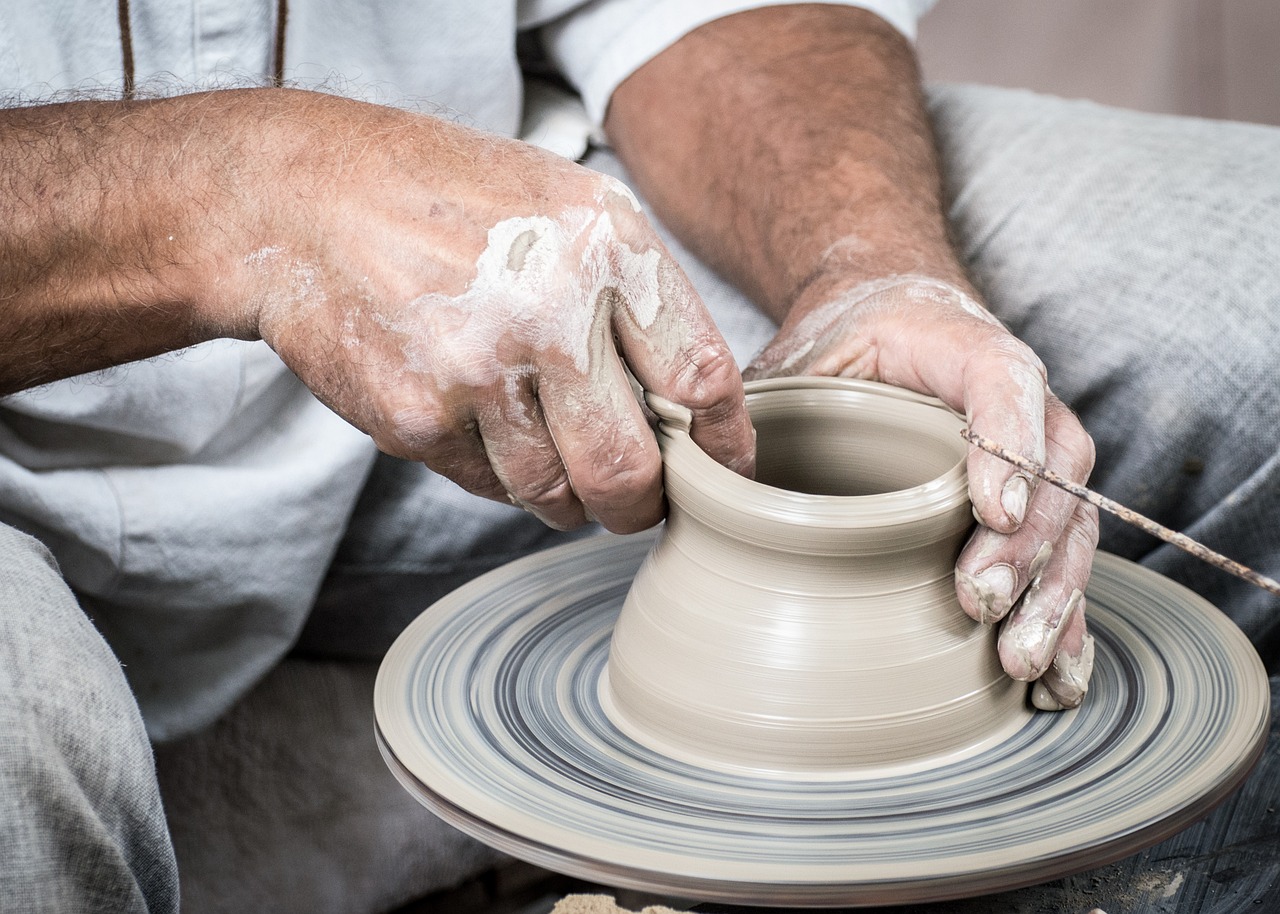
Hamada's Influence on Folk Pottery
Shoji Hamada's impact on folk pottery is nothing short of revolutionary. His work not only embodies the essence of Japanese traditional ceramics but also serves as a bridge connecting the past with contemporary practices. By embracing the rustic charm of everyday objects, Hamada breathed new life into a craft that many considered outdated. He believed that pottery should not just be functional but should also carry a story, a sentiment that resonates deeply with artisans around the world.
One of the key aspects of Hamada's influence is his dedication to the principles of simplicity and utility. He often opted for earthy colors and natural glazes, celebrating imperfections that reflect the hand of the maker. This approach has inspired a resurgence of interest in traditional pottery practices, encouraging potters to value authenticity over perfection. Hamada's philosophy was clear: pottery should be a part of daily life, not just an object of admiration. His pieces, often used for serving food or holding flowers, invite the user to engage with art in a personal and meaningful way.
Hamada's techniques have also sparked a renewed appreciation for the importance of craftsmanship. He believed that each piece should tell a story, and this narrative quality is something that many contemporary potters strive to achieve. His focus on traditional methods, such as the use of natural materials and hand-throwing techniques, has encouraged a new generation of artists to explore these time-honored practices. In doing so, they have found ways to innovate while remaining true to the roots of the craft.
Furthermore, Hamada's work has had a profound influence on the global pottery community. His dedication to folk pottery has inspired artists worldwide to explore their own cultural heritage and incorporate it into their work. This cross-pollination of ideas has led to a rich tapestry of styles and techniques, showcasing the diversity of pottery as a medium. From Japan to the Western world, Hamada's legacy continues to inspire potters to find beauty in the ordinary and to celebrate the stories embedded in their creations.
In summary, Shoji Hamada's influence on folk pottery is a testament to the enduring power of tradition and craftsmanship. His philosophy of simplicity, utility, and storytelling has not only revitalized interest in traditional pottery practices but has also paved the way for innovative approaches that honor the past while embracing the future. As potters continue to explore their own narratives, Hamada's spirit lives on in every piece they create.
- What is folk pottery? Folk pottery refers to ceramic objects made for everyday use, often characterized by their functional design and traditional techniques.
- How did Shoji Hamada influence modern pottery? Hamada's dedication to traditional methods and his philosophy of integrating art into daily life have inspired many contemporary potters to embrace authenticity and simplicity.
- What techniques did Hamada use in his pottery? Hamada often used hand-throwing techniques, natural materials, and earthy glazes to create rustic, functional pieces that reflect the beauty of imperfection.
- Why is craftsmanship important in pottery? Craftsmanship ensures that each piece carries the artist's story and intentions, creating a deeper connection between the maker and the user.
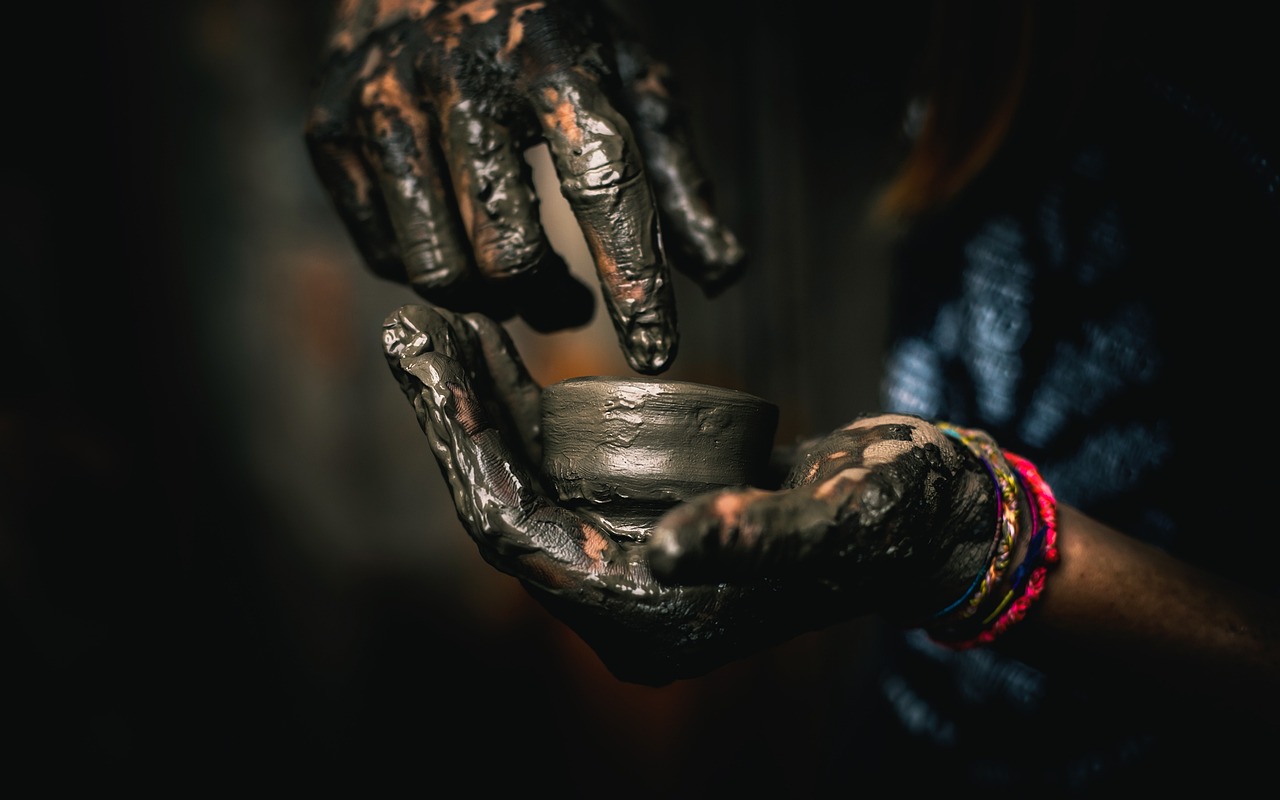
Hamada’s Role in the Mingei Movement
Shoji Hamada was not just a potter; he was a visionary who played a pivotal role in the Mingei Movement, which celebrated the beauty of everyday objects. This movement, rooted in Japanese folk art, emphasized the significance of craftsmanship and the cultural heritage embedded in utilitarian items. Hamada believed that art should not be confined to galleries but should be an integral part of daily life. His work resonated deeply with the Mingei philosophy, which advocated for the appreciation of handcrafted goods that embody the spirit and traditions of their makers.
Through his dedication to traditional techniques, Hamada elevated the status of pottery from mere functionality to a respected art form. He often utilized local materials and methods passed down through generations, ensuring that each piece not only served a purpose but also told a story. His rustic ceramics, characterized by their organic forms and earthy glazes, reflect the essence of Japanese culture and the aesthetics of simplicity.
Hamada's influence extended beyond his own creations; he was instrumental in educating others about the importance of folk art. He traveled extensively, sharing his knowledge and passion for pottery with artisans around the world. His teachings emphasized that pottery should resonate with the user, creating a bond between the object and its owner. This philosophy is encapsulated in the Mingei Movement's core belief that art should be accessible and appreciated in everyday life.
To illustrate Hamada's contributions to the Mingei Movement, consider the following key aspects:
- Promotion of Traditional Techniques: Hamada championed ancient methods, ensuring they were preserved for future generations.
- Integration of Art and Life: He believed that pottery should enhance daily experiences, making the mundane beautiful.
- Collaboration and Education: Through workshops and demonstrations, he inspired countless potters to embrace the Mingei philosophy.
In essence, Hamada's legacy within the Mingei Movement continues to inspire artists and potters today. His commitment to blending functionality with artistic expression has paved the way for a renewed appreciation of handmade ceramics. By championing the beauty found in everyday objects, Hamada not only enriched the world of pottery but also encouraged a deeper connection between art and life.
Q: What is the Mingei Movement?
A: The Mingei Movement is a Japanese folk art movement that emphasizes the beauty of everyday objects and the importance of traditional craftsmanship.
Q: How did Shoji Hamada contribute to the Mingei Movement?
A: Hamada promoted traditional pottery techniques, integrated art into daily life, and educated others about the value of folk art, significantly impacting the movement.
Q: Why is Hamada's work considered important?
A: His work embodies the principles of the Mingei Movement, celebrating simplicity, functionality, and the cultural significance of handmade ceramics.

The Vision of Grayson Perry
Grayson Perry is not just a potter; he is a storyteller and a provocateur. His work transcends traditional pottery, challenging societal norms and expectations through intricate designs and bold themes. With a unique ability to weave personal narratives into his creations, Perry's pottery serves as a mirror reflecting the complexities of modern life. Imagine walking into a gallery where every piece of pottery tells a story, each one more intriguing than the last. This is the world Perry has crafted, where art meets life in the most unexpected ways.
Perry’s pottery often features vibrant colors and intricate patterns, but it is the underlying messages that truly captivate audiences. He tackles issues such as identity, gender, and class with a touch of humor and satire. For instance, his series of pots titled "The Vanity of Small Differences" explores the concept of taste and social class through the lens of everyday life. It’s a brilliant commentary on how our choices in art, fashion, and even pottery can reflect our social standings. Each piece becomes a conversation starter, inviting viewers to engage with the themes presented.
What makes Perry’s work particularly fascinating is his willingness to experiment with unconventional materials and techniques. He often combines traditional pottery methods with modern elements, resulting in pieces that are both timeless and contemporary. This fusion not only showcases his technical skill but also encourages other artists to step outside the boundaries of conventional pottery. By pushing the limits of what pottery can be, Perry inspires a new generation of artists to explore their creativity without fear.
One of the most compelling aspects of Perry’s artistry is his dedication to exploring identity through his work. He often uses his own experiences as a transvestite artist to inform his pieces, creating a dialogue about gender and societal expectations. His pottery becomes a platform for discussion, challenging viewers to reconsider their own perceptions of identity. This approach not only personalizes his work but also resonates with a broad audience, making his art accessible and relatable.
In addition to his artistic endeavors, Perry is also an accomplished writer and broadcaster. His ability to articulate complex ideas in an engaging manner has made him a prominent figure in contemporary art discourse. Through his documentaries and books, he shares insights into the world of pottery and the broader art scene, further enriching the public’s understanding of the craft. This multifaceted approach allows Perry to reach a wider audience, making the art of pottery more approachable and appreciated.
Ultimately, Grayson Perry's vision is a testament to the power of pottery as a medium for self-expression and social commentary. His work not only challenges the traditional notions of what pottery can be but also invites us to reflect on our own lives and the stories we tell. In a world where art often feels disconnected from everyday life, Perry’s creations remind us that pottery can be a profound vehicle for exploring the human experience.
- What is Grayson Perry known for?
Grayson Perry is known for his provocative pottery that challenges societal norms and incorporates storytelling through his art.
- How does Perry incorporate personal experiences into his work?
Perry often uses his experiences as a transvestite artist to inform his pottery, creating pieces that explore themes of identity and societal expectations.
- What materials does Grayson Perry use in his pottery?
Perry is known for experimenting with unconventional materials and techniques, blending traditional pottery methods with modern elements.
- Why is Grayson Perry considered a significant figure in contemporary art?
Perry's ability to articulate complex ideas, along with his innovative approach to pottery, has made him a prominent figure in the contemporary art scene.
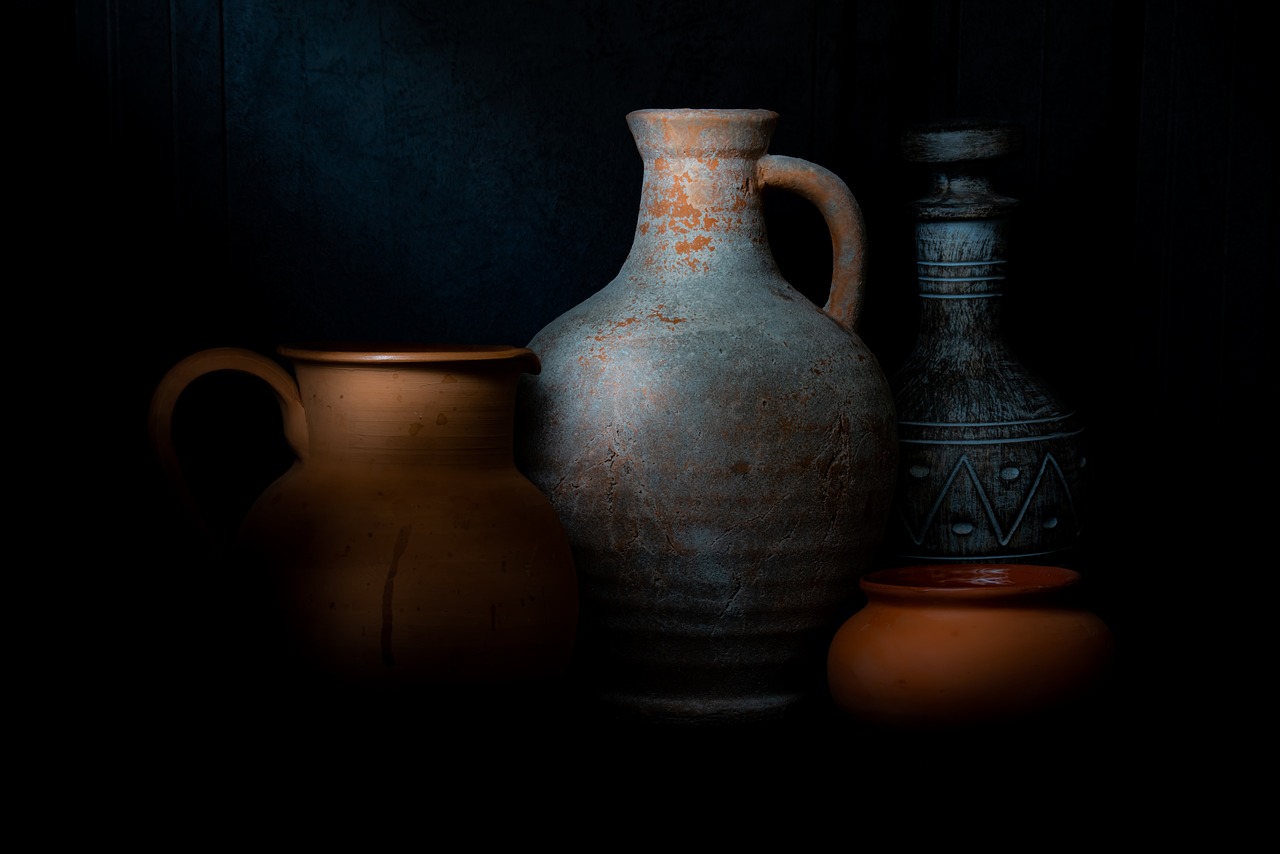
Exploring Identity Through Pottery
Grayson Perry’s pottery is more than just clay and glaze; it’s a vivid canvas that tells stories and challenges societal norms. Each piece he creates acts as a mirror reflecting his personal experiences and the world around him. Have you ever thought about how the objects we create can express who we are? Perry's work dives deep into the concept of identity, using pottery as a medium to explore complex themes such as gender, class, and culture. His pieces often provoke thought and discussion, inviting viewers to engage with the narratives woven into the ceramic forms.
One of the most fascinating aspects of Perry's work is his use of humor and satire. He masterfully blends traditional pottery techniques with contemporary themes, creating pieces that are not only visually striking but also intellectually engaging. For instance, his famous vase titled The Walthamstow Tapestry intricately combines imagery from his life, showcasing everything from his childhood memories to societal critiques. It’s a perfect example of how pottery can serve as a medium for storytelling, allowing the artist to convey personal and collective narratives.
Moreover, Perry's pottery often incorporates symbols and motifs that resonate with broader social issues. By doing so, he encourages viewers to reflect on their own identities and the world they inhabit. His work can spark conversations about intersectionality—how different aspects of identity, such as race, gender, and socioeconomic status, interact and shape our experiences. This exploration is not just limited to his own identity; it opens the floor for discussions about the identities of others, creating a rich tapestry of dialogue around the art form.
In addition to the visual elements, Perry also uses text in his pottery. Words and phrases are often inscribed on his pieces, adding another layer of meaning. This method highlights the importance of language in shaping identity. It makes us ponder: how do the words we choose to use reflect who we are? By incorporating text, Perry invites viewers to engage with his work on a deeper level, prompting them to consider their own narratives and the stories they tell through their creations.
Ultimately, Grayson Perry's pottery is a celebration of identity in all its complexity. It challenges us to look beyond the surface and consider the stories behind each piece. Whether you are an aspiring potter or simply an admirer of art, Perry's work serves as a reminder that pottery is not just about aesthetics; it’s about connection, communication, and the shared human experience. So, the next time you pick up a piece of pottery, take a moment to reflect on the identity it represents—both of the artist and of yourself.
- What themes does Grayson Perry explore in his pottery?
Perry often explores themes of identity, gender, class, and societal norms through his work. - How does humor play a role in Perry's pottery?
Humor and satire are integral to his pieces, allowing him to address serious topics in an engaging way. - What is the significance of text in Perry's work?
Text adds another layer of meaning, encouraging viewers to reflect on their own identities and experiences. - Can pottery be a form of storytelling?
Absolutely! Pottery can convey personal and collective narratives, making it a powerful medium for storytelling.
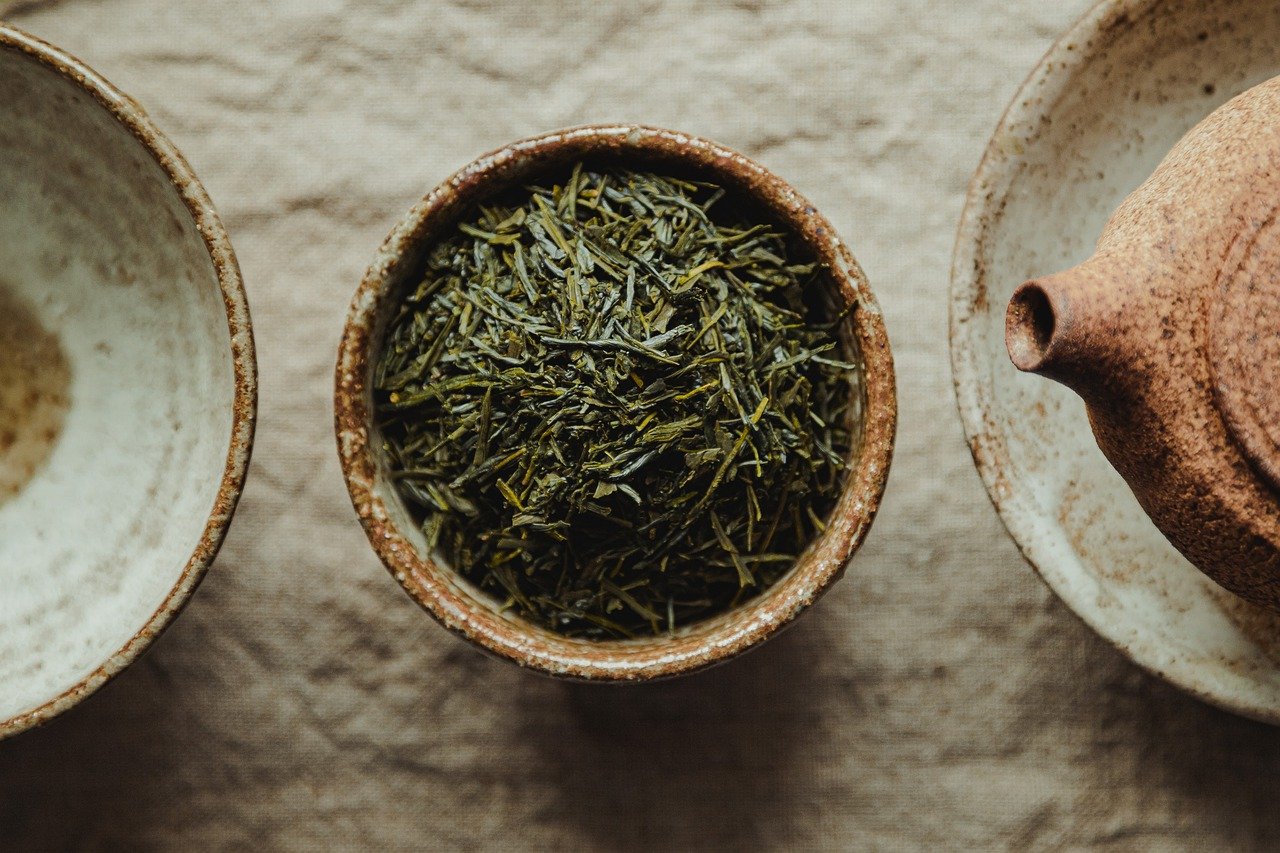
Innovative Techniques and Materials
Grayson Perry's approach to pottery is nothing short of revolutionary. He doesn’t just stick to traditional methods; rather, he embraces a wide array of innovative techniques and materials that challenge the norms of the craft. Imagine a potter who sees their work as a canvas for storytelling—this is Perry. He often incorporates unexpected elements into his pieces, such as found objects and mixed media, which not only enhance the aesthetic appeal but also infuse deeper meaning into his creations.
One of the most striking aspects of Perry's work is his use of unconventional materials. While many potters rely on standard clay types and glazes, Perry explores the use of materials like textiles, paint, and even digital prints. This eclectic mix allows him to create pieces that are visually stunning and conceptually rich. For instance, he often combines traditional ceramic techniques with modern artistic expressions, resulting in a unique fusion that captivates audiences. This blending of styles not only showcases his versatility but also encourages other artists to step outside their comfort zones.
Perry’s experimentation with glazes is another hallmark of his technique. He often uses a layering method, applying multiple glaze types to achieve vibrant colors and intricate textures. This technique can be likened to a painter layering colors on a canvas, allowing for depth and complexity in the final piece. His glazes often feature bold patterns and unexpected hues that draw the viewer in, inviting them to explore the narrative behind each work.
Moreover, Perry's work is heavily influenced by his background in textile arts. This influence is evident in his pottery, where he often incorporates textile-like patterns and designs, blurring the lines between different art forms. By doing so, he creates a dialogue between pottery and other artistic disciplines, showcasing the interconnectedness of art in all its forms. This cross-pollination of ideas is a testament to the evolving nature of pottery as a contemporary art form.
In addition to his innovative techniques, Perry's commitment to storytelling sets him apart. Each piece he creates is imbued with personal and societal narratives, often reflecting his own experiences and observations. This narrative approach not only makes his work relatable but also elevates pottery to a medium of expression that resonates on a deeper emotional level. As a viewer, you’re not just looking at a pot; you’re engaging with a story, a piece of someone's life.
As we delve into the world of contemporary pottery, it's clear that artists like Grayson Perry are pushing the boundaries of what pottery can be. His innovative techniques and materials not only redefine traditional practices but also inspire a new generation of potters to explore their own creative possibilities. In a field that has existed for thousands of years, Perry reminds us that there is always room for innovation and creativity.
- What materials does Grayson Perry use in his pottery? Perry often incorporates unconventional materials such as textiles, paint, and digital prints, alongside traditional clay and glazes.
- How does Perry's background influence his work? His background in textile arts informs his pottery, leading to the incorporation of textile-like patterns and designs.
- What is unique about Perry's glazing techniques? He employs a layering method with multiple glazes to achieve vibrant colors and intricate textures, creating depth in his pieces.
- Why is storytelling important in Perry's pottery? Each piece reflects personal and societal narratives, making his work relatable and emotionally engaging for viewers.
Frequently Asked Questions
- Who are the most influential pottery artists?
Some of the most influential pottery artists include Bernard Leach, Lucie Rie, Shoji Hamada, and Grayson Perry. Each of these artists has brought unique techniques and philosophies to the craft, shaping the world of pottery in significant ways.
- What is Bernard Leach known for?
Bernard Leach is often referred to as the father of British studio pottery. He is celebrated for blending Eastern and Western styles, creating timeless pieces that continue to inspire both new and experienced potters around the globe.
- How did Lucie Rie's glazing techniques influence modern ceramics?
Lucie Rie's innovative glazing techniques, characterized by unexpected colors and textures, have had a profound impact on contemporary ceramics. Her willingness to experiment has encouraged many artists to push the boundaries of their own work, fostering a culture of creativity and exploration.
- What is the Mingei movement and how is Shoji Hamada connected to it?
The Mingei movement celebrates the beauty of everyday objects and folk art. Shoji Hamada was a key figure in this movement, advocating for the appreciation of functional pottery and the artistry found in simple, utilitarian designs.
- What themes does Grayson Perry explore in his pottery?
Grayson Perry's pottery often delves into themes of identity, culture, and societal norms. By using humor and satire, he addresses complex issues while challenging viewers to reflect on their own experiences and beliefs.
- How can I learn pottery techniques from these artists?
Many resources are available for learning pottery techniques inspired by these artists, including books, online courses, and workshops. Visiting galleries or exhibitions showcasing their work can also provide valuable insights into their methods and philosophies.
- What makes pottery an important art form?
Pottery is an important art form because it combines functionality with artistic expression. It reflects cultural heritage, personal stories, and the emotional connection between the artist and their work, making it a deeply meaningful craft.



















